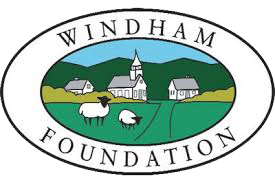This course will meet online with both synchronous and asynchronous sessions.
Registration Fee: $975 (includes 3 graduate credits from Castleton University); $500 without graduate credit
Those taking the class just for recertification credits do not need to participate in November/December discussions/meetings or complete a final project.
Dates and Times:
- October 12, 19; November 2, 16, 30, 4:00 – 6:00 pm Primary Source Workshops
- November 30 – December 7 Asynchronous discussions and office hour meetings
- December 20 Final Project Due
Course Goals:
- To use nearby history to prompt discussions about race and identity in our own communities.
- To learn key concepts for teaching the hard history of slavery, racism, and white supremacy.
- To develop supportive discussion protocols for conversations about race and identity.
Course Objectives:
- Use history to prompt meaningful discussions about race and racism with students.
- Learn how to have courageous conversations about race.
- Consider how to help students become empathetic leaders and agents of change.
Required Readings/Texts: (Flow of History provides all reading materials)
- Ali Michael “What White Children Need to Know about Race” from National Association of Independent Schools (2014)
- “How Should I Talk about Race in my Mostly White Classroom?” (2017)
- Harvey Amani Whitfield: The Problem of Slavery in Early Vermont, 1777 – 1810
- Angela Evancie, What’s the History of the Underground Railroad in Vermont?
- Connecticut and the West Indies: Sugar Spurs Trans-Atlantic Trade
- Elise Guyette, The Power of Erasure: Reflections on Civil War, Race, and Growing Up White in Vermont
Assignments:
1. Actively participates in all sessions (20%)
2. Prepares draft classroom project for asynchronous discussion and office hours (20%)
3. Writes a 2-3 page reflection, considering the ways in which the central themes discussed in the sessions might be applied to your teaching. (20%)
4. Final Assignment-creates a historical inquiry for students. (40%)
Class Schedule:
Session 1 [October 12]: Talking about Race in the Classroom
Key Concept: Creating a classroom environment where conversations can be had about tough topics, requires group guidelines. Safe spaces aren’t created so students can be comfortable. They are created so students can bravely speak respectfully and be heard with respect.
Pre-Readings:
- Ali Michael “What White Children Need to Know about Race” from National Association of Independent Schools (2014)
- “How Should I Talk about Race in my Mostly White Classroom?” (2017)
Session 2 [October 19]: The Problem of Slavery in Early Vermont
Key Concept: Slavery existed in the North, including Vermont and New Hampshire.
Pre-Readings:
Harvey Amani Whitfield: The Problem of Slavery in Early Vermont, 1777 – 1810 [introductory essay]
Session 3 [November 2]: The Business of Slavery in the North
Key Concept: Slavery and the slave trade were central to the development and growth of the economy across British North America and, later, the United States.
Pre-Readings:
Session 4 [November 16]: Abolition, Resistance, and the Underground Railroad
Key Concept: Enslaved people were human beings with inspirations, dreams, fears, and families. They resisted their enslavement in small and large ways
Pre-Readings:
- Angela Evancie, What’s the History of the Underground Railroad in Vermont?
Session 5 [November 30]: Legacies of Slavery: Living in a Structurally Racist Society
Key Concept: Systemic racism is a foundation of American society. Throughout history Black Vermonters have faced bias and discrimination, and this is still true today.
Pre-Readings:
- Elise Guyette, The Power of Erasure: Reflections on Civil War, Race, and Growing Up White in Vermont
Final Assignment:
- Consider the goals of the course and write a 2 to 3-page reflection that discusses how ideas, activities, and/or resources from the course will impact your classroom practice. What might you try to change or do in the coming year and why?
- 2) Create a historical inquiry that leads students from investigation of primary sources to brainstorming ways to take informed action. The inquiry should include historical sources with guiding questions that help students connect the history to contemporary issues of race and identity. See rubric at end of this document. You can adapt materials from the Flow of History website or use primary sources from other resources. You can use this lesson form or a format your district requires. This can be as short as a one-classroom period lesson with a primary source set.

Funding provided by the Windham Foundation.
Thank you!